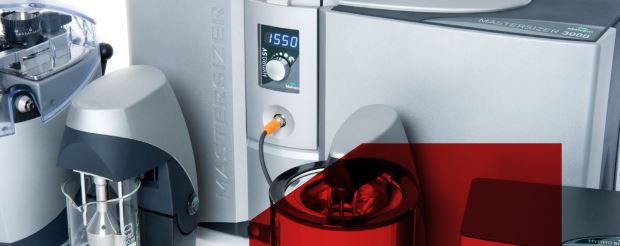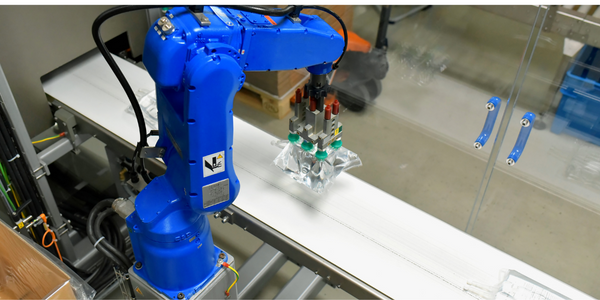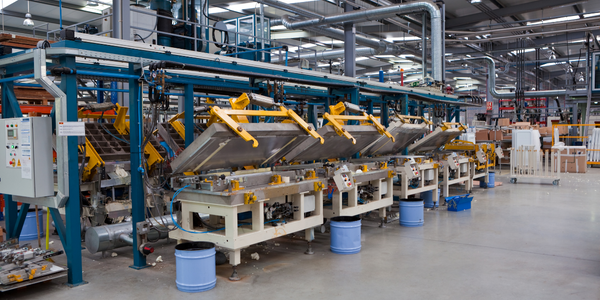Download PDF
Twilio's Low-Cost Solution for Connecting Migrant Workers in Singapore with Families
Technology Category
- Networks & Connectivity - Cellular
Use Cases
- Speech Recognition
- Time Sensitive Networking
The Challenge
The migrant worker population in Singapore faced a significant challenge during the global pandemic. The need to connect with their families became critical, but technical and logistical issues made it difficult. Many of their families back home did not have access to Wi-Fi or could not afford data plans for calls via WhatsApp or Viber. Landlines were often the only option, but obtaining prepaid calling cards became challenging due to quarantine orders and the risk of virus spread. The situation was further complicated by the fact that many of these workers' families resided in Bangladesh, where the infrastructure for digital communication was not as robust.
About The Customer
The customers in this case are the migrant workers in Singapore, many of whom have families in Bangladesh. These workers faced significant challenges in communicating with their families due to the lack of Wi-Fi or affordable data plans in their home countries. The global pandemic further complicated the situation, making it difficult and risky to purchase prepaid calling cards. The Call Home app, powered by Twilio, provided a much-needed solution for these workers, enabling them to connect with their families more frequently and at a lower cost.
The Solution
A group of acquaintances participating in a Facebook and TikTok Techathon developed an app to help isolated seniors with 3G smartphones communicate with their loved ones. When they became aware of the predicament facing Singapore’s migrant worker population, they quickly pivoted to focus on that need. They partnered with Twilio to create an app called Call Home. Twilio’s Programmable Voice solution had the right features to make the Call Home app easy to use and quick to launch. It enabled low latency and clear audio capabilities, leading to higher and more reliable call quality compared to prepaid cards. Twilio’s Programmable SMS was also used as an internal solution to help onboard migrant workers to the app. To ensure cost-effectiveness, Twilio.org provided a discounted rate, leading to a significant decrease in calling costs.
Operational Impact
Quantitative Benefit
Related Case Studies.

Case Study
Centralizing Data for Improved Efficiency: A Case Study on Malvern Panalytical
Malvern Panalytical, a UK-based hi-tech electronics company, was grappling with the challenge of decentralized data storage. The company had a vast amount of unstructured data scattered across various platforms, from hard drives to emails and floppy disks. This made the data searching process extremely cumbersome and inefficient. The company's rapid growth, from 200 to over 1,000 employees in a decade, and expansion across three continents further exacerbated the need for a more structured and centralized data system. As a company involved in electronics manufacturing and software development, it was crucial for Malvern Panalytical to find a platform that could structure all their data, track all modifications of documents in real time, and provide clear visibility of the internal information flow across all its facilities.

Case Study
Managed Hosting Platform
Formula 1® is a sport where every millisecond matters. With changing preferences and the growth of the digital medium, many fans choose to experience the sport through the F1.com website. The website needs to deliver a superior experience to tens of millions of fans across the world consistently. Hence, it is imperative to have a robust platform that can deliver the required performance and scale with growing trac and dynamic fan expectations. Some of the key challenges are: • Every race weekend, Formula1.com attracts up to 7 million fans. Managing this huge surge in website traffic, requires a scalable hosting platform that can simultaneously allow millions of fans to experience the excitement of the sport seamlessly. • Fans across the globe expect an engaging and immersive experience through enriched and enhanced race content across multiple devices. To meet this requirement Formula1.com needs to have a robust platform that is able to deliver real-time updates and information across screens, be it tablets, TVs or smartphones. • A global brand like Formula 1® needs to ensure it delivers a consistent user experience across all platforms across the globe. This consistent delivery of enriched content cannot be compromised through downtime or any other issue at any point. • In an age where threats to global websites are prevalent, Formula 1® needed a platform that was ready to meet any challenge to its website. They needed a solution that delivers consistency, scalability and yet at the same time is continuously monitored, secure and reliable.

Case Study
Flow Robotics: Scaling Up Production and Accelerating Product Development with IoT
Flow Robotics, a Danish manufacturer, developed flowbot™ ONE pipetting robots to alleviate the strain on bioanalysts in life-science laboratories and hospitals across Europe. These robots were designed to automate part of the testing process, speeding up the time it takes to produce results and reducing pressure on staff. However, the company faced challenges in scaling up production and accelerating product development. High workloads and physically challenging conditions have long been an issue for laboratory professionals. Flow Robotics estimates that around half of medical lab technicians carry out the same arm movements for at least a quarter of their working day. The American Society for Clinical Pathology reported that 85% of laboratory professionals feel burnt out; 36% struggle with inadequate staffing; and 32% face a heavy workload and pressure to complete all testing on time.

Case Study
EDF's Transformation: Enhancing Employee Experience through IT Modernization
EDF, a major UK utilities company, was grappling with a highly customized service management system that was largely manual, with limited potential for automation. This made it difficult to predict or prevent system failures and provide a resilient service. The company's IT system for incident handling was purely manual, leaving no room for modernization. EDF wanted to serve its business and residential customers better by improving the response time to rising energy demands. To achieve this, the company needed to provide its employees with the right tools for improved productivity, better collaboration, and an enhanced IT experience at a reduced cost to serve.

Case Study
Mastercard Exceeds CTR Benchmark by 54% with IBM Watson Advertising Accelerator
In the face of global challenges, brands were required to adapt their communication and outreach strategies. Mastercard, a global technology company in the payments industry, was no exception. The company needed to educate consumers about their partnership with ‘Stand Up to Cancer’ and their campaign to donate up to four million dollars to help fund cancer research. The challenge was to effectively reach and engage consumers, and to do so in a way that would resonate with them and encourage them to take action.






